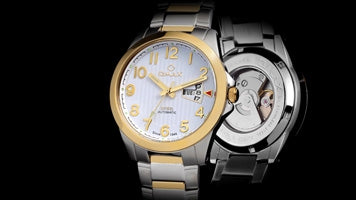
A Beginners Guide On An Automatic Watch
Share
The world of automatic watches can seem daunting at a first glance. With a vast majority of watch wearers in our modern day, so use to quartz (battery powered) watches, which simply keep ticking until a replacement battery is needed, automatic watches take on a whole new demeanour and functionality in comparison. Though quartz watches are electronically timed, and benefit from this hugely with incredible precision such as gaining or loosing just 1-2 seconds per year, automatic watches are a whole other world of brilliance, technical precision, micro-engineering, beauty and luxury, all wrapped up in one outstanding piece of mechanics. The presence of automatic watches has been in danger a number of times, including the 1970's when quartz watches first appeared on the market, and even to this day with smart watches becoming increasingly popular, but the automatic watch still dominates the industry.
For a lot of people, an automatic watch can seem overwhelming when trying to work, or set the watch... and in some circumstances, this can be correct, as some automatic watches contain several complications (complications=functions) such as a day setting, date setting and month setting. Generally speaking, automatic watches are quick to learn your way around, and it wont be long before you become a master of setting, adjusting and maintaining your automatic watch.
Here at T|P, we have listed a comprehensive guide below to teach you all the fundamental basics to working, and maintaining your automatic watch, and to become a master of its setting, functionality and maintenance.
So lets start with the basics...
What Is An Automatic Watch?
An automatic watch works on the same principles as an mechanical watch. A movement or calibre that sits at the heart of the watch, would be mechanically powered by the wearer manually putting power into it daily, through winding the crown. An automatic watch effectively does the same, but instead, features a freely-moving rotor in the back of the watch, which through kinetic energy from moving around in daily life, would keep the watch powered throughout the day, eliminating the need to manually wind the watch as it would effectively do it itself.
Through the continuous development of automatic watch movements, automatic watches are now incredibly well engineered, precise in time-keeping, and can maintain on average around 30-40 hours power reserve, meaning when your watch sits still, it will keep ticking for several days before stopping.
Pictured above is a popular Omax watch which features an exhibition caseback so you can see the full automatic watch movement.
One way to avoid this is by getting an automatic watch winder. These small and efficient electronically powered winders rotate your automatic watch daily to keep the rotor blade in the back of the watch spinning, and will effectively keep your watch ticking when not being worn. Not only this, but automatic watches thrive from being kept going. Just like a car being left still for long periods of time, oils and lubricants can become stale, where as a daily continuous motion will keep parts moving smoothly, and keep lubricants thin and spread across the mechanics.
